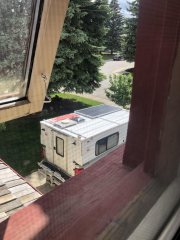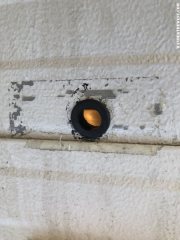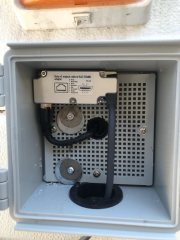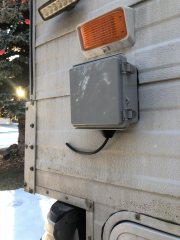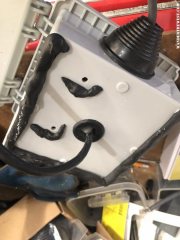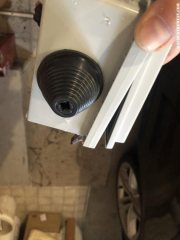This seems to be a hot topic since the pandemic. Most of us who wander are not that keen on staying super connected, so I understand this may not be super relevant to everyone. I and others are still trying to work while wandering, and may find this topic informative!
This is a first draft....
First thing I did was join MIRC (Mobile Internet Resource Center) and Mobile Must Have, two great sites with deep knowledge of cell boosting and remote work.
And I built on my experience with a WeBoost unit, and my own changing work needs.
The WeBoost was a good introduction to what is possible, basically receiving a week signal at amazing distances (60 miles down the HITR Road, for one) and making text and cell calls possible. The downside of that unit is built into the technology, which literally boosts what it receives. If it receives crap, it boosts crap. And your receiving device is still just a cell phone which must be very close to the re-broadcasting antenna (I strapped mine to the antenna with rubber bands in use) which makes making calls awkward. I also used my cell as a wifi hotspot, enabling zoom calls from my laptop, but had me stuck inside the camper within a few feet of the cell phone.
I wanted even better signal boosting, and to be untethered from the cell phone. To get that, I needed to move to a more advanced device, a "router".
A router (you may be aware that you likley already have one in your house, which receives internet signals over the wire via your phone or cable providor... and sends out wifi in your home) takes signals in one form and routes/sends them out in another (yes, that is a vast oversimplification!) In this case, an RV router is taking cell (and other signals) and re-broadcasts that in a way you can easily consume (in my case, just WiFi).
Advanced routers can receive cell (multiple cell providors at the same time too), satilite, wifi, cable etc and re-broacast as wifi or on wired connections.
Of course, to make all this work, you need an antenna. The WeBoost I had used their "Trucker" antenna which is a large high-gain cell antenna. I had it mounted to one of the rear jack brackets so I could raise it above the camper roof when we were camped. That antenna was made with an 80-20 type of material.
The new router needed a much different antenna, one that could receive the latest cell signals (but not 5G - that's a "short range" system for urban deployment, and not really relevant when "wandering the west")... basically MIMO signals that enable 4G to work well.
I note the antenna in the pictures above, with two high gain antennas at 90* angle to eachother, are likely being used in MIMO mode, and needs to be aimed to work.
MIMO is used in newer phones, and not in 3G setups... (3G has also been recently retired by most cell providors!)
The antenna I'm using - the Husky Parsec - is an omnidirectional MIMO antenna that does not need to be aimed. It also contains wifi and gps antennas, so the connected router can receive and broadcast those as well).
All this said, I can now sit comfortably in the shade with a cold one and conduct work or browse the net. Range seems to be about 80'-100' from the camper, which is plenty for me.
More to come....




